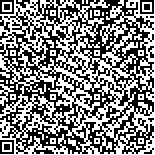| 摘要: |
| [摘要] 目的 分析腺苷A2B受体(A2BR)激活对脓毒症诱导的急性肺损伤(ALI)的影响并探讨其在肺微血管内皮炎症损伤中的调控作用。方法 (1)将24只SD大鼠随机分为假手术组(sham组)、ALI模型组(ALI组)、A2BR激动剂BAY60-6583干预组(ALI+BAY组)和A2BR抑制剂PSB1115干预组(ALI+PSB组),每组6只。制模后24 h处死大鼠取肺组织,光镜下行肺损伤评分(Smith评分),计算肺湿/干质量比值(W/D)。Evans Blue染色法测定肺水清除率(AFC)。酶联免疫吸附试验(ELISA)测定肺组织炎症因子肿瘤坏死因子-α(TNF-α)、白细胞介素-6(IL-6)、白细胞介素-1β(IL-1β)的水平。(2)采用TNF-α诱导人肺微血管内皮细胞(HPMECs)损伤模型,设立对照组、TNF-α组、BAY组、PSB组、BAY+TNF-α组和PSB+TNF-α组,各组细胞培养24 h后采用异硫氰酸荧光素(FITC)-白蛋白(albumin)法检测HPMECs单层通透性,Werstern blot法检测IL-1β、细胞间黏附分子-1(ICAM-1)、血管内皮钙黏连蛋白(VE-cadherin)、促血管生成素(ANGPT)的表达水平。结果 与sham组比较,ALI组的Smith评分、肺W/D及肺组织TNF-α、IL-6、IL-1β水平均显著升高,AFC显著降低;与ALI组比较,ALI+BAY组的Smith评分、肺W/D及肺组织TNF-α、IL-6、IL-1β水平显著降低,AFC显著升高;而ALI+PSB组结果相反。TNF-α诱导HPMECs损伤模型中,与对照组比较,TNF-α组IL-1β、ICAM-1表达水平及HPMECs单层通透性升高,VE-cadherin、ANGPT表达水平降低。与TNF-α组比较,BAY+TNF-α组IL-1β、ICAM-1表达水平及HPMECs单层通透性降低,VE-cadherin、ANGPT表达水平升高,而PSB1115预处理可逆转上述现象。上述各组之间差异有统计学意义(均P<0.05)。结论 腺苷A2BR激活可减轻脓毒症诱导的ALI,并通过减轻肺微血管内皮炎症、降低通透性、促进血管生成等途径起保护作用。 |
| 关键词: 腺苷A2B受体 脓毒症 急性肺损伤 人肺微血管内皮细胞 炎症 |
| DOI:10.3969/j.issn.1674-3806.2024.02.03 |
| 分类号:R 631 |
| 基金项目:北京市自然科学基金项目(编号:7212124) |
|
| Activation of adenosine A2B receptor attenuates sepsis-induced acute lung injury and pulmonary microvascular endothelial inflammation injury |
|
WANG Huixia, AN Youzhong
|
|
Department of Critical Care Medicine, Peking University People′s Hospital, Beijing 100044, China
|
| Abstract: |
| [Abstract] Objective To analyse the effect of the activation of adenosine A2B receptor(A2BR) on sepsis-induced acute lung injury(ALI) and to explore its regulatory role in pulmonary microvascular endothelial inflammation injury. Methods (1)A total of 24 Sprague-Dawley(SD) rats were randomly divided into sham operation group(sham group), ALI model group(ALI group), A2BR agonist BAY60-6583 intervention group(ALI+BAY group), and A2BR inhibitor PSB1115 intervention group(ALI+PSB group), with 6 rats in each group. The rats were sacrificed 24 hours after modeling, and their lung tissues were collected. Lung injury score(Smith score) was obtained under light microscopy, and lung wet/dry mass ratio(W/D) was calculated. Alveolar fluid clearance(AFC) rate was detected by Evans Blue staining. The levels of inflammatory factors in lung tissues including tumor necrosis factor-α(TNF-α), interleukin-6(IL-6) and interleukin-1β(IL-1β) were detected by enzyme-linked immunosorbent assay(ELISA). (2)TNF-α-induced human pulmonary microvascular endothelial cells(HPMECs) injury model was used. The control group, TNF-α group, BAY group, PSB group, BAY+TNF-α group and PSB+TNF-α group were set up. After 24 hours of cell culture, fluorescein isothiocyanate(FITC)-albumin assay was used to detect the monolayer permeability of HPMECs in each group, and the levels of IL-1β, intercellular adhesion molecule-1(ICAM-1), vascular endothelial-cadherin(VE-cadherin) and angiopoietins(ANGPT) expressions were detected by Werstern blot. Results Compared with the sham group, the ALI group showed significantly increased Smith score, lung W/D, and levels of TNF-α, IL-6 and IL-1β in lung tissues, and showed significantly decreased AFC. Compared with the ALI group, the ALI+BAY group showed significantly decreased Smith score, lung W/D, and levels of TNF-α, IL-6 and IL-1β in lung tissues, and showed significantly increased AFC. However, the ALI+PSB group showed the opposite results. In the TNF-α-induced HPMECs injury model, compared with the control group, the TNF-α group showed the increased levels of IL-1β and ICAM-1 expressions, and the increased monolayer permeability of HPMECs, and the decreased levels of VE-cadherin and ANGPT expressions. Compared with the TNF-α group, the BAY+TNF-α group showed the decreased levels of IL-1β and ICAM-1 expressions and the decreased monolayer permeability of HPMECs, and the increased levels of VE-cadherin and ANGPT expressions. However, pretreatment with PSB1115 could reverse the above phenomenon. The differences among the above groups were statistically significant(P<0.05). Conclusion Activation of A2BR can attenuate sepsis-induced ALI and exert protective effects by reducing pulmonary microvascular endothelial inflammation, reducing permeability and promoting angiogenesis pathways. |
| Key words: Adenosine A2B receptor(A2BR) Sepsis Acute lung injury(ALI) Human pulmonary microvascular endothelial cells(HPMECs) Inflammation |

